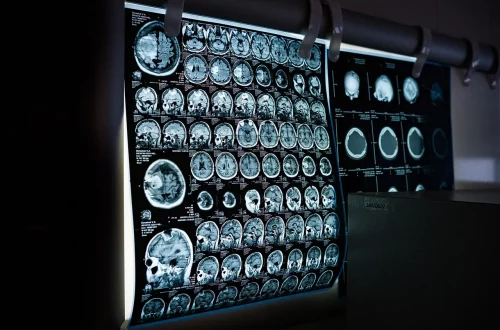
Why Do Warts Appear on the Neck? Understanding Causes and Solutions
Warts are small, benign growths that can appear on various parts of the body, including the neck. While they are generally harmless, warts can be bothersome for those who experience them, both physically and aesthetically. The appearance of warts on the neck can raise questions about their causes, potential triggers, and the most effective solutions for their removal. Understanding these factors is essential for individuals who want to manage or eliminate warts effectively.
The formation of warts is primarily linked to the human papillomavirus (HPV), which can infect the skin and cause cell proliferation, leading to the development of these growths. Warts come in different shapes and sizes, and their texture can vary from smooth to rough. While warts can emerge on any part of the body, the neck is a common area for their appearance, especially in individuals with certain risk factors.
It is also important to note that warts are contagious and can spread through direct contact or indirectly via contaminated surfaces. This makes prevention and early intervention crucial. In this article, we will explore the underlying causes of warts on the neck, various treatment options available, and effective preventive measures to minimize their occurrence.
Understanding the Causes of Warts on the Neck
Warts on the neck primarily develop due to an infection caused by the human papillomavirus (HPV). This virus enters the skin through small cuts or abrasions, leading to the rapid growth of skin cells, which results in the formation of warts. The neck, being exposed and often subjected to friction from clothing or accessories, can be particularly susceptible to these viral infections.
Several factors can contribute to the likelihood of developing warts. First, individuals with weakened immune systems are at a higher risk. Conditions such as HIV/AIDS, autoimmune disorders, or even certain medications that suppress the immune response can make it easier for HPV to take hold. Additionally, children and teenagers are more prone to warts due to their still-developing immune systems.
Another contributing factor is the environment. Warts thrive in warm, moist conditions, making areas like swimming pools, locker rooms, and communal showers hotspots for HPV transmission. If someone has warts on their hands or feet, the virus can easily be transferred to the neck through touch.
Moreover, personal habits play a significant role in the development of warts. For instance, frequent shaving or grooming of the neck can create micro-injuries, providing an entry point for HPV. Furthermore, individuals who have a history of warts or those with a family history of warts may find themselves more susceptible due to genetic predispositions.
Understanding these causes not only helps in identifying why warts may appear on the neck but also aids in developing effective prevention strategies. Awareness of personal risk factors and environments where HPV is likely to spread can lead to better choices that minimize the chances of infection.
Treatment Options for Neck Warts
When it comes to treating warts on the neck, several options are available, ranging from home remedies to professional medical treatments. The choice of treatment often depends on the size, number, and location of the warts, as well as the individual’s personal preferences.
Over-the-counter (OTC) treatments are among the most common methods used for wart removal. These products typically contain salicylic acid, which works by gradually peeling away the wart. Users are advised to apply the treatment consistently over several weeks, which can lead to effective results. However, it’s essential to follow the instructions carefully to avoid skin irritation or damage to surrounding healthy tissue.
For those seeking quicker results, professional treatments may be necessary. Dermatologists can offer several options, including cryotherapy, which involves freezing the wart with liquid nitrogen. This method effectively destroys the wart tissue, often requiring multiple sessions for complete removal. Another option is laser therapy, which uses focused light to target and eliminate the wart. This procedure tends to be more suitable for stubborn warts or those that do not respond to other treatments.
Electrosurgery is another effective method, where a high-frequency electrical current is applied to burn off the wart. This technique is particularly useful for larger or more extensive warts.
In some cases, immunotherapy may be recommended, where medications are used to stimulate the body’s immune response against the HPV. This approach can be particularly beneficial for individuals with multiple warts or those who frequently experience recurrences.
While warts on the neck are generally harmless, if they change in appearance, bleed, or cause discomfort, it’s crucial to consult a healthcare professional for an accurate diagnosis and treatment plan.
Preventive Measures to Avoid Warts
Preventing warts on the neck involves a combination of good hygiene practices, personal habits, and awareness of the environments that may foster HPV transmission. By adopting preventive measures, individuals can significantly reduce their chances of developing warts.
First and foremost, maintaining proper hygiene is essential. Regularly washing the neck area with soap and water can help eliminate any potential viral particles. After bathing or swimming, it’s advisable to dry the neck area thoroughly, as moisture can create an environment conducive to HPV growth.
Avoiding direct contact with warts, whether one’s own or someone else’s, is crucial. If someone has visible warts, it’s best to refrain from sharing personal items like towels, razors, or clothing. When using communal facilities such as gyms or pools, wearing flip-flops or water shoes can minimize skin contact with potentially contaminated surfaces.
Another preventive measure is to be cautious when shaving or grooming the neck. Using a clean razor and avoiding aggressive shaving techniques can help prevent micro-cuts that may serve as entry points for the virus. If you are prone to warts, consider using electric shavers, which reduce the risk of nicks and cuts.
Strengthening the immune system is also beneficial in warding off HPV infections. A balanced diet rich in vitamins and minerals, regular exercise, and adequate sleep can all contribute to a healthier immune response.
Lastly, if you notice any signs of warts or skin changes, seek medical advice promptly. Early intervention can prevent the spread of warts and may help in effective treatment.
In conclusion, while warts on the neck can be a nuisance, understanding their causes, exploring treatment options, and taking preventive measures can help individuals manage and reduce their occurrence effectively.
**Disclaimer:** This article is not intended as medical advice. Please consult a healthcare professional for any health-related issues or concerns.




